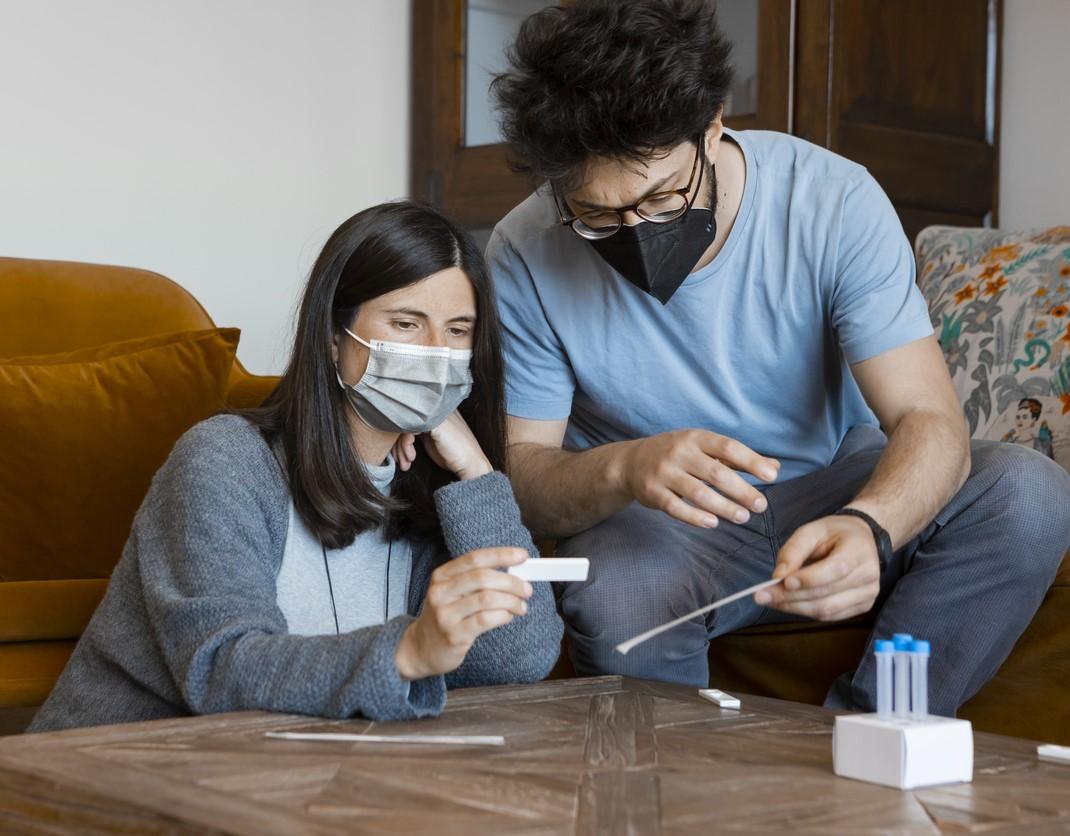A randomized controlled trial yesterday in JAMA Internal Medicine finds that adult consumers struggle to interpret and act on negative at-home COVID-19 tests.
The US Food and Drug Administration (FDA) has authorized 11 at-home, rapid antigen tests, including instructions, for asymptomatic and symptomatic Americans as of December 2021, and the Biden administration began distributing the first of a planned 500 million free such tests in January.
While COVID-19 rapid antigen tests produce results within 30 minutes, they are less sensitive (have more false-negative results) than polymerase chain reaction (PCR) tests, which have an estimated sensitivity of about 70%, the study authors noted. Sensitivity is the probability that a test correctly identifies all positive cases.
"Therefore, users with a high pretest probability of disease should still quarantine even after receiving a negative test result," the researchers wrote. "If users ignore that probability, a negative test result may encourage behavior that is risky to them and others."
64% of users had at least a college degree
Steven Woloshin, MD, of the Dartmouth Institute for Health Policy and Clinical Practice, led the April 2021 trial, which involved asking 338 US adults how they would interpret the results of their self-test using instructions authorized by the FDA, instructions developed using decision science principles, or no instructions.
The FDA-authorized test instructions were provided by the individual test makers.
In a JAMA audio interview, Woloshin said that when he was considering the study, he read the FDA-authorized instructions and thought they undermined users' intuition. "I thought the instructions were confusing and certainly weren't clear about what you should do if your test was negative, and they don't account for pretest probability at all," he said.
Participants were paid $5 and randomly assigned in a 1:1:1:1 ratio to a set of instructions and one of four risk scenarios, including three with a high pretest probability of infection (COVID-19 symptoms or close contact with someone who tested positive), and one with a low pretest probability (no symptoms or contact). Median age was 38 years, 46% were women, and 64% had at least a college degree.
Participants chose from 5 response options, ranging from "take no precautions" to "stay at home all the time, without exceptions, and avoid contact with others, including others in the household." The latter response was most closely aligned with US Centers for Disease Control and Prevention (CDC) recommendations for those with a positive COVID-19 test result or a negative result with a high pretest probability of infection.
Better-designed instructions might help
Given a positive COVID-19 test result, 95% of participants appropriately isolated, regardless of the instructions they received. Participants given a negative results and a high-probability scenario were more likely to not quarantine appropriately using the FDA-authorized instructions (33%) than the design-science instructions (14%), or no instructions (24%).
Of participants given a low-probability scenario and negative results, 31% of those using FDA instructions quarantined unnecessarily, as did 22% of those using design-science instructions and 10% of those using no instructions. No comparison, however, was statistically significant (P = 0.05 and P = 0.20, respectively).
In a news release from the Geisel School of Medicine at Dartmouth, Woloshin said that the findings suggest that many users will be mistakenly reassured by a negative test result. "In other cases, they may quarantine unnecessarily because they misinterpret the implications of their test results," he said.
"Our results show how fundamentally important it is to design and pilot-test instructions to ensure that they can be understood by as many users as possible—to increase the benefits and reduce the harms from at-home self-test kits."
An untested public health message can be as dangerous as an untested drug, Woloshin said in the interview. "Otherwise, it undermines the whole point of [COVID-19] testing."




















